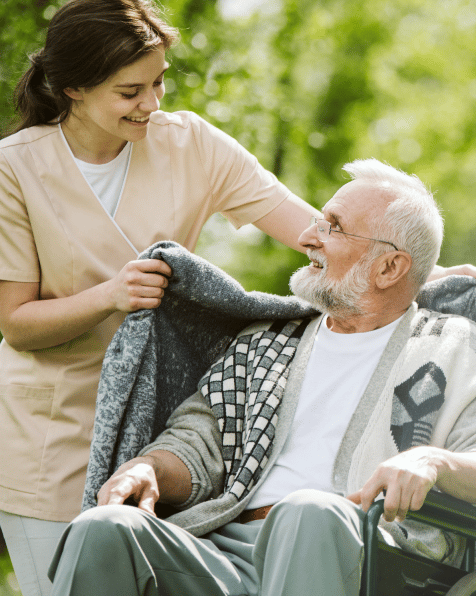7 Essential Tips for Safely Aging at Home
When it comes to aging, safety is the utmost priority. Whether you choose to live independently or with family, it is essential to create a home environment that is not only safe but also empowering and inviting. By implementing a few thoughtful adjustments, you can prevent accidents and ensure overall well-being.
Are you an older adult preparing to age at home or are you seeking to help an older loved one? Get started with the following tips for aging safely and comfortably at home.
1. Clear Pathways
One of the first steps in making your home safer is ensuring clear and unobstructed pathways. Remove clutter, extra furniture, and rugs that could create tripping hazards. Think about rearranging furniture to create wider walkways, making it easier for movement around the house, especially if you need to accommodate mobility aids like walkers or wheelchairs.
2. Install Grab Bars and Handrails
Adding grab bars and handrails throughout your home can really contribute to the safety of a home in an inexpensive and unobtrusive way. Install them in the bathroom near the shower, bathtub, and toilet to help with balance and mobility. And don't forget to add handrails to staircases and hallways to prevent any unexpected tumbles. You can find help with installation from your local hardware store, there may also be support through community organizations for these supports. This organization helps pay for grab bars if you are eligible.
"There is a good chance; an accident brought you into this world. Don’t let one take you out.”
— Author Unknown”
3. Improve Lighting
Let there be light! Good lighting is essential in general and even more so if our eyesight is not as sharp as it once was. Make sure all rooms are well-lit and bid farewell to any dim or flickering lighting. Consider adding motion-sensor lights in hallways and at the top and bottom of staircases. It'll reduce the risk of nighttime falls and make navigating the house a breeze!
4. Reduce Fall Hazards
It is important to take steps to reduce fall hazards. One way to do this is by securing loose cords and removing tripping hazards such as rugs. You can also add non-slip mats or adhesive strips in the shower and bathtub, and other high-traffic areas. Think of the moisture-prone areas of your home places in your home where you’ve already slipped in the past. If there is an entire room with a slippery floor, it might be a good goal to install a non-slipping floor in the area. Finally, test your floor cleaners. Some cleaning products can make floors extra slippery. Test each new product on a small area before using it widely and keep your receipts! You might want to return a product before finding the cleaner that works best for you.
5. Accessibility Modifications
If you have begun using a wheelchair or walker, you might need to do a little remodeling. This could involve widening doorways, installing ramps, and creating a wider entrance without steps. If your home is a multi-story house or apartment, you may need to consider moving the bedroom, or other frequently used spaces, to the ground floor. Not only will these changes boost access and mobility, but rearranging can also be a fun and creative process!
6. Medication Management
Missing medications or taking medications at the wrong time can cause serious complications. There are different tools to support you in taking the right medication at the right times. You can organize medications in labeled pill organizers, or you can tap into technology and invest in automated dispensers that dispense the right meds at the right times. This not only boosts overall health but also adds an extra layer of security. If you still have concerns, and these approaches don't cut it, it may be the right time for in-home support from a home caregiver certified in medication management.
7. Regular Safety Checks
And now, for the last tip - regularly check for safety in your home. Pay attention and notice if and where you slip, or if you have trouble moving around a certain part of the house. If you are supporting a loved one, take time to regularly observe them in their space, ask questions, and keep an eye out for safety issues that may have snuck in since your last assessment.
As you embark on this mission to make your home safer, remember that you don't have to go it alone. There are service providers that specialize in home upgrades to support aging at home, and most local handypeople will be able to support tasks like adding handrails or building a ramp. If you find yourself in need of some backup, guidance, or professional assistance in providing top-notch care for your elderly family members, don't hesitate to reach out.
Here at Cooperative Home Care Associate (CHCA), we're all about delivering compassionate and customized home care services that put the safety, comfort, and well-being of your loved ones front and center. Our team trains workers to help with your daily living activities like bathing, dressing, meal preparation, and more. Our team of skilled caregivers is committed to providing the highest standard of care. Our coordinators and supervisors are responsive and focused on serving your unique needs with quality.


